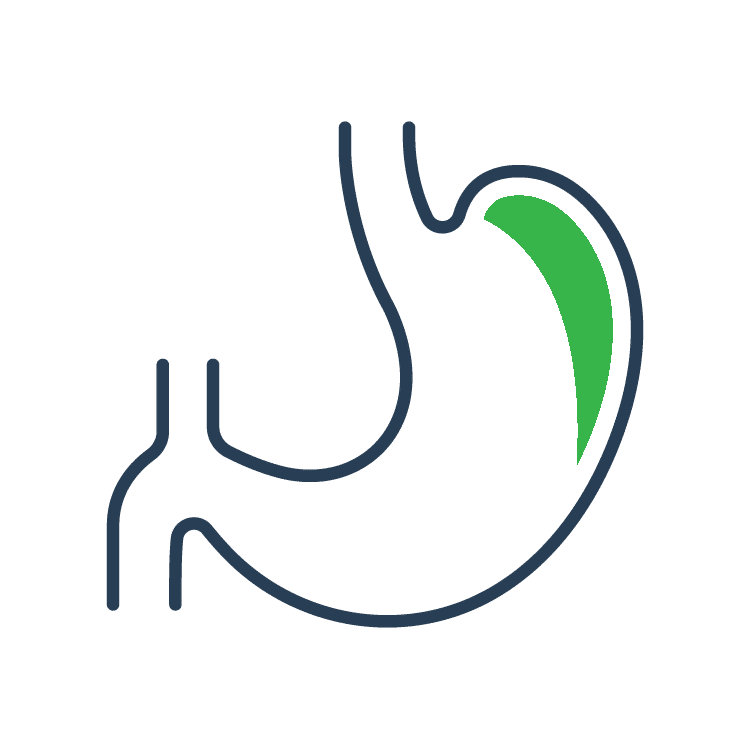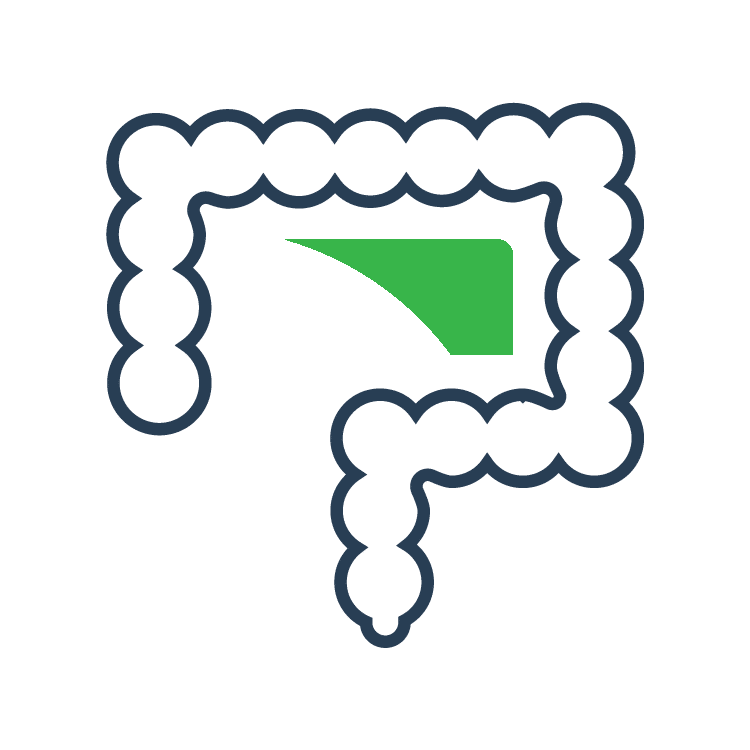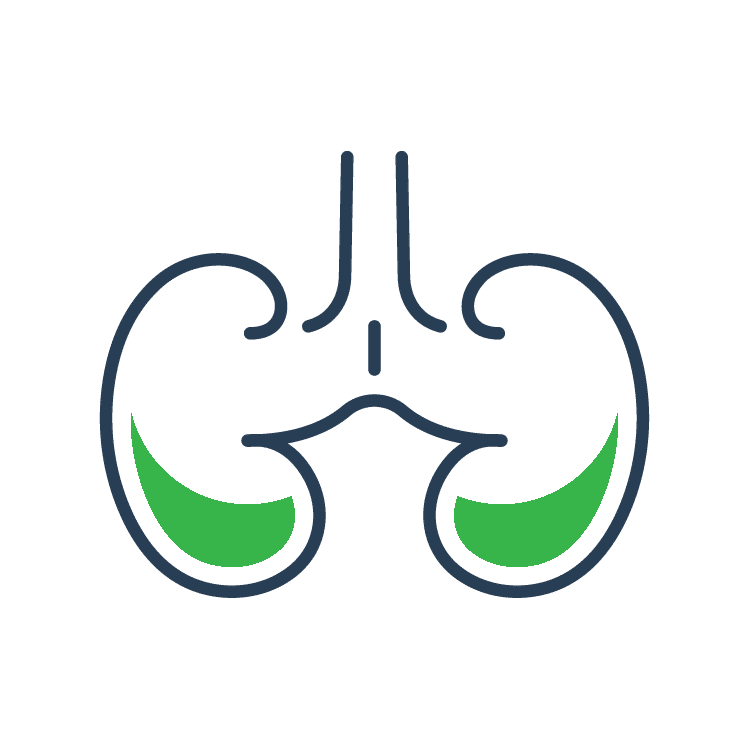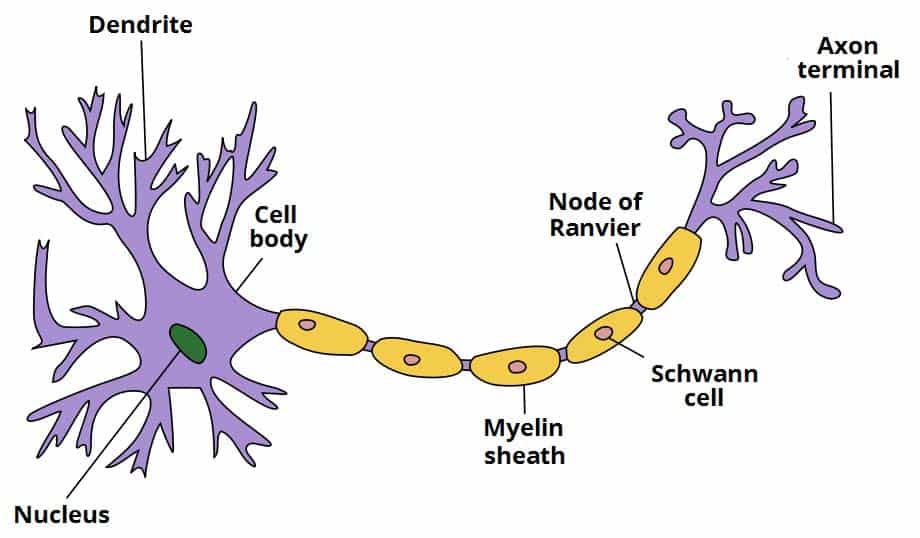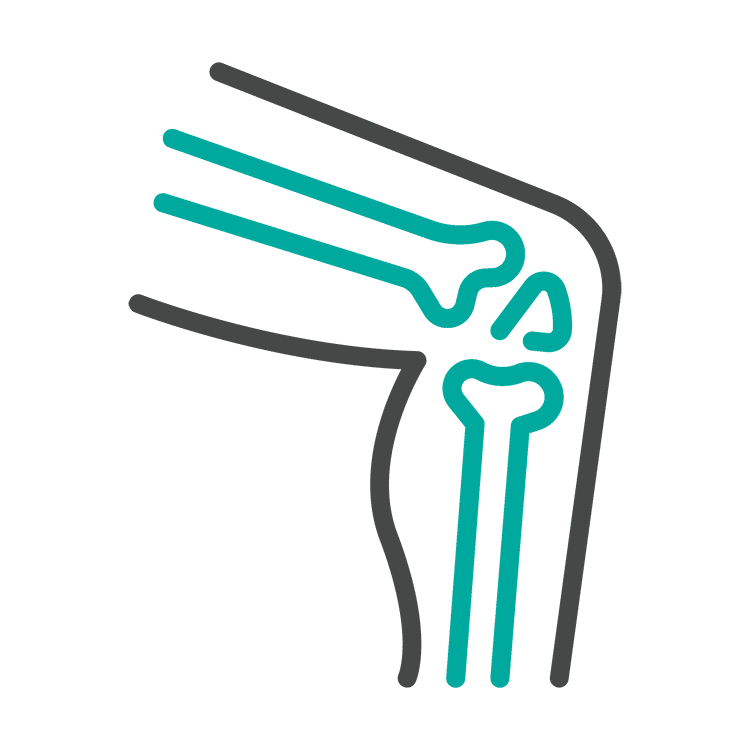The gastrointestinal tract is an organ system that enables us to ingest food via the mouth, digest it by breaking it down, absorb it, and then expel the remaining waste as faeces via the anus. The gastrointestinal tract is made up of a series of hollow organs joined together in a long tube with many folds from the mouth to the anus. The hollow organs that make up the gastrointestinal tract include the mouth, oesophagus, stomach, small intestine, cecum, colon (large intestine), rectum and anal canal.
The organs of the gastrointestinal tract contain layers of muscles, enabling their walls to move food through the tract by a process called peristalsis, allowing for the breaking down and absorption of food to take place.
The oesophagus is a muscular tube, transporting food and liquid from the pharynx (part of the throat behind the mouth and nasal cavity) to the stomach. It descends down into the thorax and enters the abdomen, where it then joins the stomach.
The stomach is located between the oesophagus and the duodenum. After food enters the stomach, the muscular walls of the stomach act to mix the food and liquid with digestive juices. The contents of the stomach, called chyme, are then emptied into the small intestine.
The small intestine is approximately 6.5m long and extends from the stomach to the large intestine. Anatomically, the small intestine can be divided into three parts: the duodenum, jejunum and ileum.
The colon extends from the cecum to the anal canal and receives digested food from the small intestine and absorbs water and electrolytes to form faeces.
In this section, learn more about the physiology of organs within the gastrointestinal tract- the mouth, stomach, small intestine, large intestine, the pancreas, liver, gallbladder and spleen.

